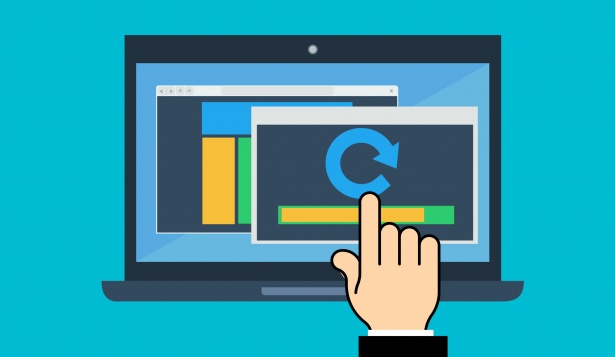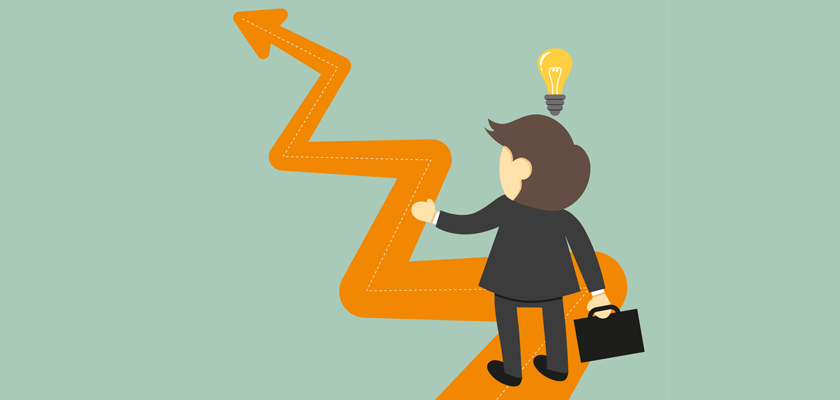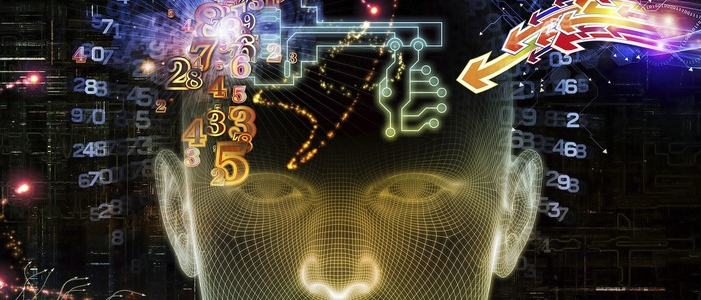Overview
- Looking to transition into data science? Here are 8 paths for a non-data science person to land a role in this space
- The 8 backgrounds we cover in this career transition article include – software engineering, finance, UX, application development, and a non-technical fresher
- I’ve provided links to plenty of resources and learning paths to help you start your data science journey
Introduction
Are you looking for a role in the data science space? You’ve come to the right place!
It feels like half the world wants to move into data science these days, with spectacular perks and a plethora of openings on offer in the industry. Organizations are investing heavily in data science talent to stay or move ahead of their competitors. As a data science aspirant, you couldn’t have picked a better time to change your career!
But this comes with its own set of challenges. I’m often asked by folks in my network about how they should transition into data science. People from all sorts of backgrounds – IT, Sales, Finance, HR, Healthcare, etc. – they all want a piece of the data science pie.
Let me first put your doubts to rest – it is entirely possible to transition into data science from your current line of work (or study). And that’s what we’ll talk about in this article!
I’ve collated my pick of the top answers from around the internet in this article. We’ll be talking about how to make a transition into data science from these backgrounds:
- Software Engineering/Development
- Finance
- UX (User Experience)
- Application Development
- Marketing and Sales
- HR
- Psychologist
- A Fresher with no Relevant/Technical Background
If you are looking to transition into the field of data science, there is nothing more important than having the right plan and guidance. This is usually lacking from the general ways of learning (certification courses, blogs, tutorials). The AI and ML Blackbelt+ come with 14+ courses, 25+ projects, and the best part – 1:1 mentorship sessions so that you are never off track.
Starting a data science career without proper guidance and planning can be confusing. We have compiled a clear-cut free roadmap guide to building a career in Data Science that is curated by expert curators at Analytics Vidhya –
Let’s dive in!
1. Transition from a Software Engineer Role to a Data Scientist One – Yassine Alouini
This pick is for the software engineers out there looking for a transition into data science. Yassine has listed down the things you should do to get into data science. He also explains what kind of roles would be suitable for a software engineer getting into this field.

Answer by – Yassine Alouini
To start with, if you really enjoy software engineering, then you should consider becoming a data engineer or a machine learning engineer.
You’ll love the two stories I’ve mentioned below as well about how two software engineers successfully transitioned into a data scientist role. The articles detail the learning path these people took to achieve their dream:
- How I became a Data Scientist after 8 years working as a Software Test Engineer
- How I became a Data Science Analyst from a Software developer
2. Career Transition from Finance to Data Science – Richard Saldanha
Finance seems like a natural fit for data science, doesn’t it? It’s a numbers field and that blends in nicely with the data science space. It’s no coincidence that the BFSI sector is leading the way in data science adoption!
So if you’re coming from an accounts/finance background, you’re already halfway to achieving your dream of getting a data science role.
Answer by – Richard Saldanha
If you want to work as a data scientist in finance, you will probably need most (if not all) of the following attributes:
- A degree in mathematics/statistics, computer science, physics, engineering, or subject with significant mathematical content
- An ability to program in multiple languages (both compiled and interpreted) such a C/C++, S (e.g. as implemented in R), Matlab, Python, and/or Java
- Good database skills (i.e. at least SQL programming) in any classical RDBMS (for example, MySQL, PostgreSQL, Oracle, SQL Server)
- An adeptness with handling time-series data from Bloomberg, Reuters, or any of the myriad financial data streams available
However, there are also two very important characteristics of people doing data science jobs in finance which are less frequently discussed:
- You’ll need to be able to communicate mathematical ideas well both verbally and visually to non-specialists
- You’ll need to know how to harness their mathematical training to solve genuine commercial problems
Alongside all this, you’ll need a good understanding of optimization (underpinned by solid linear algebra and calculus learned in school), statistical inference, simulation, multivariate analysis, and proper data visualization.
If you possess such training, then understanding techniques such as support vector machines, neural networks, random forests, and gradient boosting are merely a hop, skip and jump away.
This is an intriguing career transition! I’ll be honest – I hadn’t considered a UX person wanting to transition into data science.
This answer by Chris R. Becker focuses on learning data science tools keeping UX experience in mind. He states some of the tools which UX designers are already using and how those tools could be used for data science purposes. He emphasizes more on working with a data science team to dive deeper into critical data science topics.
Answer by – Chris R. Becker
Note: You’ll also love the below story about how an IT person, after working in the field for a decade, transitioned into data science:
5. Can a Marketing and Sales professional switch to Data Science? – Ayush Biyani
Marketing and Sales experience is quite different than any other career transition mentioned. The sales and marketing team work very closely with analysts and rely heavily on data. There is no doubt that many professionals will be lured by data science. This can be a natural transition so read ahead to know more.
This answer by Ayush Biyani is the bitter truth for anyone wanting to start their career in data science. Ayush mentions the skills required to become a data scientist, how your day looks like as a data scientist, and asks you to decide for yourself.

Answer by – Ayush Biyani
I see two other answers where they advise you to switch to analytics if you like it. I would like to point out a few realities to you so that you know what they all assumed you have. I assume you have some experience under your belt in finance.
- Analytics job is not your other routine job where people have a feeling “I can manage it somehow “. You are either in it fully or not there. There is no middle way out. so don’t flatter yourself by saying “Mai manage kar lunga”
- Analytics requires respect and knowledge both for the following entities: Maths in general, statistics, number crunching, programming ( to some extent )
- Analytics is supposed to make somebody take some decision that brings some profits or cuts some loss ( make a better decision in general ) so it requires a lot of brutal business focus. Trust me this is not as easy as it sounds. I have been seeing it for 7 yrs now.
- Analytics tasks require structured thinking. I have seen that this is where most of the people who are new to its struggle and then give up. Ask yourself – can I think structurally boring manner for the rest of life. Is it me? Only if the answer is yes should you consider shifting.
- Since you are new you have to swallow your “Area head” ego in most of the scenarios and be willing to learn and at times unlearn the way things work. Ready for it? ready to work with a fresher better suited at these tasks without an MBA and 5 years younger than you.
- Are you ready to play with terms such as “regression”, “decision tree”, “logistic regression”, “cross tabs”, “graphs and charts”, “feature engineering”, “model validation” for your whole life?
- Behind all the glamour that people see in analytics – there is boring maths and stats that are sitting and doing their work silently. Every presentation and graph have a number at the background taken by more than a simple method. appreciate that?
- This one is most important- Do you really consider yourself a keen and a fast learner? Yes? Sure?
In my view, you have to answer at least 5 out of these points as yes. And (h) and (f) has to be yes for sure.
Look, my aim is not to discourage you but give you the actual and real-not so rosy picture. I daily see analysts making faces when some sharper analytics guys come and tell them that this analysis is not right for Xyz reasons.
So…Be realistic and take a practical call. Not a glamorous call.
Motivated? I have added a few resources to help you navigate through marketing and data science –
- Power of Marketing and Business Analytics – An Approach to Grow your Business Online from Scratch
- A Comprehensive Guide to Digital Marketing and Analytics Every Data Science Professional Must Read
6. Going from HR to a career in Data Science – Ann Rajaram
Honestly, when people hear transition stories from HR to Data Science, they find themselves dumbfounded and the usual reaction is this – “Are you serious? Is there any connection to these fields?”
Ann Rajaram answers this question for you. She demonstrates how you can transition your career into data science and make use of the precious “people skills”.

Answer by Ann Rajaram
Technically, anyone can become a data scientist, assuming you (a) master the programming skills and (b) show potential employers how you can add value.
But if you already have strong experience in HR, then it makes logical sense to leverage that domain expertise, too. For example, a lot of the larger companies use data scientists in the HR domain for “workforce analytics” to understand employee churn, project ROIs, leadership development and to improve diversity metrics.
For example, a lot of the larger companies use data scientists in the HR domain for “workforce analytics” to understand employee churn, project ROIs, leadership development and to improve diversity metrics.
Not saying that you cannot pivot 100% to a completely different domain, just that it would be hard to start from scratch without either domain knowledge or serious technical chops. Occasionally, salaries at entry-level data scientist roles might be a step down for someone who has 7–10 years of corporate or managerial experience.
Models used for workforce analytics would also translate well to universities and educational/behavioral health institutions since these are all domains requiring “people skills” and a strong understanding of behavioral psychology. For example, large universities use analytics from learning management systems to (a) intervene for students at-risk of failing, (b) create personalized student paths, or (c) even update curriculum to spend more time on syllabi where a large majority of students trip or struggle.
The AI and ML Blackbelt+ come with the guidance of an expert mentor who will customize the learning path specifically for you. Coming from an HR background and don’t know where to start? AI and ML Blackbelt + program can help you there.
7. Break from Psychology to Data Science – Philippe Hocquet
Honestly, this is by far the most interesting section of the article. Let us not forget that Data Science is a subsection of Artificial Intelligence. A psychology professional may have many insights that are invisible to a normal person.
Philippe Hocquet enlightens us with his thoughts on Psychology and machine learning and how can a psychologist contribute to a data science project. Read ahead for the intriguing answer.

Answer by – Philippe Hocquet
The key is to move as fast as possible to an actual project in your area. Be the psychologist in a team, write about it, meet with people in the field, and find a next job that is 80% Psychology, 20% Machine Learning, then go from there.
Data Science is a sports team by excellence: on top of the Maths Ph.D., a project also needs systems engineers, designers, psychologists, healthcare professionals. That’s your foot in the door.
One area I would start with is the Human-Computer Interface (HCI). For instance:
- How people can communicate emotions to the machine? Which ones and why?
- How the systems can be made more efficient by taking into account frustration, stress, pushback from the user?
- How to generate expressions in synthetic speech?
- And even: how the algorithm can become emotionally intelligent, i.e. take into account human psychology in its evaluation of scenarios/impact
I can think a dozen of companies or labs that employ plenty of psychologists. This is US-based but you can probably find the equivalent in Germany:
It goes from “empathic tech” (for example Rosalind Picard group at the MIT media lab: Group Overview ‹ Affective Computing – MIT Media Lab) to healthcare applications (for example Ellie developed at the USC, for clinical interviews, the Simsensei project. Paper here: Morency).
And of course, an entire industry now exists to measure, track, and extrapolate every nuance of human behavior online (think the “manipulative” or “addictive” features of apps).
8. There is No One Background Required to Become a Data Scientist – Arun Korupolu
One of the most common questions we see is – can I become a data scientist without a technical/engineering background? The short answer – yes!
The below answer by Arun summarizes our thoughts perfectly. You don’t necessarily need a Ph.D. or even a programming background to start (though that might be helpful if you have that experience!).
Answer by – Arun Korupolu
End Notes
Are you looking to transition into data science from one of these backgrounds (or a completely different one)? Our community would love to hear your story! Stories and experiences like these help future career transitioners as well.
As I mentioned at the start of the article, you should definitely enroll in either of the two learning paths depending on your career aspirations:
- A Comprehensive Learning Path to becoming a Data Scientist in 2020
- The Ultimate Learning Path to Master Deep Learning in 2020
If you are pumped and motivated to start your career in the field of data science, you can go through these comprehensive guides to become an industry-ready data science professional












Nice article. Can you please provide path for people wants to go from academics to data science industry?
Hello Pranav, This is a very informative article which encouraged me to move forward to become a data scientist. Although it covered 5 different five different however my background if completely different from these five. I have 12 years of experience of IT Service Management (ITSM/ITIL). Could you please guide me that will it be possible for me to transit myself into data scientist role and if yes what all I need to have to become a data scientist and how much time this journey would require. Appreciate your response.
Data Science is vast field, Reading books or PDF will not help you unless you do hands on practice. you need to follow proper learning path to understand depth of each and every concept in Machine Learning & Deep Learning. If you are fresher and wanted to make your career into Data science its very good choice but at the same time you have to be focused on what you are learning. If you are already into industry and wanted to switch your career into Data science you must need to work on data from multiple Domain and build projects on it which will surely help you to crack interviews. I have done course in Data science from Business Toys. I highly recommend the course from Business Toys if you want to take real experience in the world of Data.